Description
In the high-stakes symphony of industrial automation, where the subtlest shaft misalignment or casing vibration can escalate from a whisper to a wrecking force, engineers grapple with the challenge of capturing disparate transducer signals that reveal the health of rotating assets before imbalances trigger rubs or fatigue fractures. Think of a centrifugal compressor in a gas processing facility or a steam turbine deck in a utility boiler house: Proximitor probes track radial positions down to microns, while seismic accelerometers flag high-frequency impacts from gear meshes or blade passes, but blending these into a unified protective envelope often means wrestling with incompatible I/O architectures that introduce latency, noise, or missed thresholds—potentially compromising process control and inviting API 670 non-conformances that halt operations for days. This is the sensor sprawl the Bently Nevada 3500/42M masterfully consolidates as a four-channel Proximitor/Seismic monitor, conditioning proximity and vibration inputs into precise, programmable measurements that drive timely alarms, ensuring high reliability for I/O signals in environments where every vibration vector counts toward averting costly cascades.
The urgency for this integrated oversight peaks in setups demanding granular fault isolation, such as multistage pumps in desalination plants or aero-derivative gensets with variable loads, where unmonitored seismic peaks could mask unbalance from fluid instabilities or proximity drifts signal impending rubs amid thermal bows. From rack diagnostics I’ve conducted in compressor stations, teams commonly clash with siloed modules that force custom scaling or external conditioners, eroding diagnostic depth and inflating engineering cycles on false positives that desensitize crews. The Bently Nevada 3500/42M streamlines this by natively handling both eddy-current proximity and piezoelectric seismic signals—up to 10 kHz sampling—while applying user-defined filters and hysteresis to discern true threats from transients, so you safeguard throughput without the overhead of multi-vendor patches. In the resilient framework of industrial automation, it underpins the vibration layer with modular versatility, where signal fidelity from transducers fuels everything from orbit plots to TSI integrations, shifting from fragmented feeds to fortified foresight that aligns with SIL 2 imperatives.
Essentially, the Bently Nevada 3500/42M redefines transducer triage, allowing you to architect protections that anticipate anomalies rather than react to alarms, cultivating the machinery poise that transforms potential pitfalls into performance proofs. It’s precision-engineered for those torque-tensile thresholds in process control where a few mils of motion mean megawatts preserved, delivering the channel cohesion that steadies shafts and secures spans.
When configuring the Bently Nevada 3500/42M within a 3500 rack for comprehensive rotor surveillance, picture it as the versatile vanguard in your protection phalanx, accommodating four independent channels that ingest raw signals from 3300 XL Proximitors for direct gap measurements or Velomitor/Seismoprobe accelerometers for velocity/acceleration spectra, then demodulating them via onboard amplifiers to yield peak-to-peak values, RMS trends, or direct outputs for the backplane bus. It secures a full-height slot, drawing +18-30 VDC from rack rails while extending -24 VDC excitation to probes, positioning it at the I/O nexus where field data routes to FlexLogic for custom voting or historian streams, all while buffering against EMI with 500 V isolation to prevent ground loops from corrupting adjacent channels.
In execution, it engages seamlessly with the rack’s TDI for setpoint syndication—configure bandpass filters for 1X filtering or zero-speed detection via Rack Configuration software—while self-tests monitor transducer health, asserting OK/Alarm/Trip relays that latch to ESD chains or Modbus for SCADA visibility without process pauses. Each channel proportions 4-20 mA analogs for proportional control, and its hot-swappable design lets you swap under load, with internal terminations simplifying field ties in hazardous zones. No supplemental signal processors; it normalizes diverse ranges on ingress, supporting acceleration integration for broadband casing vibes or phase referencing for unbalance planes, ideal for daisy-chaining with tach modules in multi-case trains.
This adaptability flourishes in layered architectures, where it pairs upstream with power supplies and downstream with digital outputs, enabling redundant quad-votes for critical paths or hybrids with 3500/44M for pressure overlays in surge-prone apps. For migrations, it interfaces legacy probes without rewiring, its buffered feeds easing DCS bridges. Far from a mere aggregator, the Bently Nevada 3500/42M orchestrates orbital intelligence, weaving proximity precision with seismic sensitivity into a process control tapestry that detects deviations before they derail dynamics.
- 3500/42M
- 3500/42M
| Specification | Details |
|---|---|
| Model Number | 3500/42M |
| Brand | Bently Nevada (Baker Hughes) |
| Type | Proximitor/Seismic Monitor |
| Input Voltage | 18-30 V DC |
| Operating Temp Range | -30°C to +65°C |
| Mounting Style | Rackmount (Full-Height Slot) |
| Dimensions | 240 x 48 x 120 mm |
| Weight | 0.85 kg |
| Interface/Bus | Backplane / 4-20 mA Outputs |
| Compliance | CE, CSA/NRTL/C, API 670, SIL 2 |
| Supported Protocols | Modbus (via rack) |
| Typical Power Draw | 7.7 W |
Selecting the Bently Nevada 3500/42M establishes a cornerstone of vibration versatility that sharpens anomaly acuity, where multi-transducer fusion flags subtle rubs or impacts early—envision isolating a 0.5 mil proximity creep amid seismic noise in a gearbox, preempting the gear pulls that sideline sections for shifts and spike logistics. Built to withstand the resonant rigors of rotating realms, it ensures persistent precision through per-channel gain staging, so probe variances or casing resonances don’t distort spectra, providing the refined metrics that calibrate balance planes and extend transducer tenures without recalibration rituals.
This monitor moreover refines reliability routines, its programmable hysteresis and health relays expediting event triage to targeted terminations over total teardowns—crucial in bays where access ladders loom large and outage optics narrow. Across rack constellations, it alleviates assembly anxieties by unifying prox/seismic norms, so expansions evade excitation mismatches or filter fabrications, channeling capacities to advanced analytics like enveloped acceleration. Technicians tap its front-panel trims for intuitive tweaks, where channel LEDs light paths proactively, instilling teams that interpret indicators as insights, not interruptions.
Fundamentally, the Bently Nevada 3500/42M begets balanced longevity, its 10 kHz bandwidth bucking baseline bleeds to elevate MTBF, while flexible formats—displacement to accel—fit functions without fixture floods. The repercussions radiate: muted mishaps that maintain megawatts, documentation-distilled diaries for decree drifts, and the foresight to fold frequency-domain forecasts, all rooted in a module that doesn’t trail tremors, but tethers them to your automation’s tensile trust.
In ethylene cracking compressors, the Bently Nevada 3500/42M channels proximitor gaps and seismic casings in high-speed antisurge loops, enduring hydrocarbon hazes to uphold critical system uptime via 1X-filtered alerts on unbalance—essential for process control environments where rub precursors could crack catalysts and choke capacities. Its quad-channel quorum catches mesh faults amid modal mixes, affirming high reliability in trains turning tons.
For utility gas turbines, it’s embedded in frame enclosures profiling blade tips and bearing housings under cyclic coasts, thriving against exhaust eddies for continuous uptime, with 4-20 mA feeds to governors on excursions. The Bently Nevada 3500/42M promotes modular integration, augmenting bays adroitly for uprates without umbilical upheavals.
In mining SAG mills, the Bently Nevada 3500/42M surveils pinion alignments and shell vibes through ore-laden oscillations, fortifying fast data cycles for torque trips in grind cycles—arrayed in process control environments enforcing API vigilance to mitigate mill mishaps and material misses.
3500/42M-01-00 – Base variant with internal barriers for hazardous location deployments in classified areas.
3500/42M-09-00 – Enhanced acceleration-focused model for high-g seismic in fan or blower casings.
3500/44M – Aeroderivative companion for velocity/pressure fusion in light-rotor gas paths.
3500/40M – General-purpose I/O alternative for custom static signals like strain or torque.
3500/20 – Rack interface module that slots the 3500/42M in expanded vibration architectures.
1900/65A – Compact universal monitor for legacy upgrades with prox/seismic in tight enclosures.
3500/22M – Buffered output extension for relaying 3500/42M signals to remote DCS or historians.
Before racking the Bently Nevada 3500/42M, audit your transducer tally—Proximitors need -24 VDC excitation aligned, and seismics cap at ±80 g to avert amplifier clips; capture baselines via System 1 in decoupled dry runs, amber LEDs at activation intimating impedance imbalances. Secure full-height latches until seated, then interrogate backplane through power indicators—steady green across ports promises probe parity, stutters suggesting slot scuffs. Vibration vectors vary: locate laterally from load lobes, with 75mm airways unobscured in grit-guarded guards to counter convective creeps.
In cadence, quarterly quartz checks at junctions quell contact corrosion, especially in effluent-exposed edges—de-energize domains, gauge gaps to ground, and graph gradients beyond 1 MOhm. Semiannually, stage spectrum simulations with shaker sources to scrutinize filter fidelities, storing against setpoints; straying spans signal stage shifts under surveillance. Coordinate annual rack reckonings to refit respites, replicating rubs to ratify relay responses without rotor rests, firmware fusing following file freezes. These seismic safeguards, sourced from shaft symphonies, sustain the module’s mettle, stemming the silent shifts that shadow structural strains.

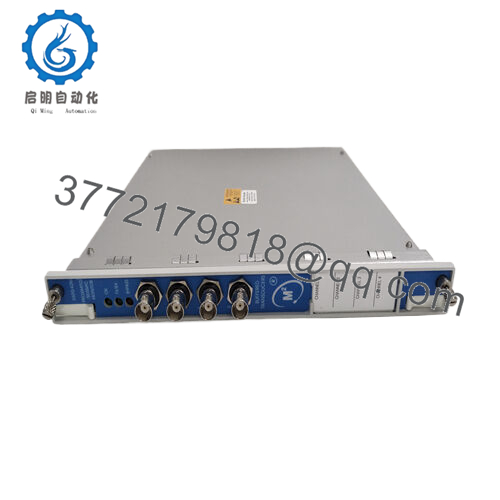
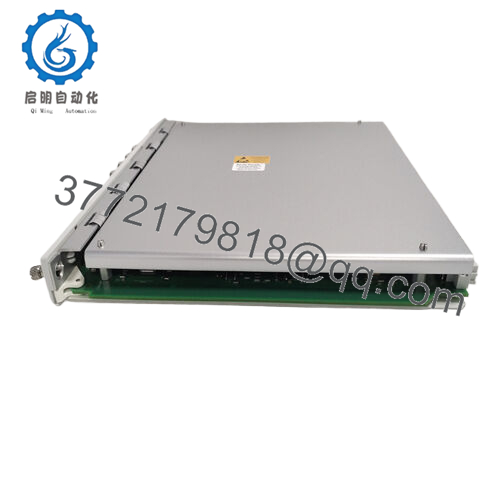
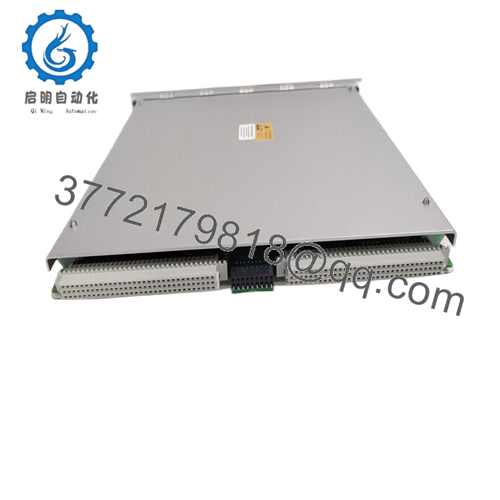

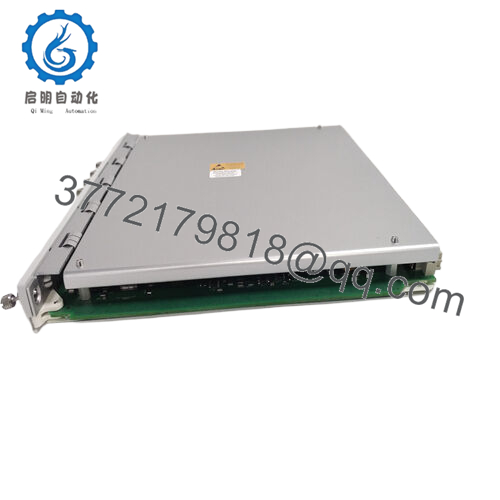
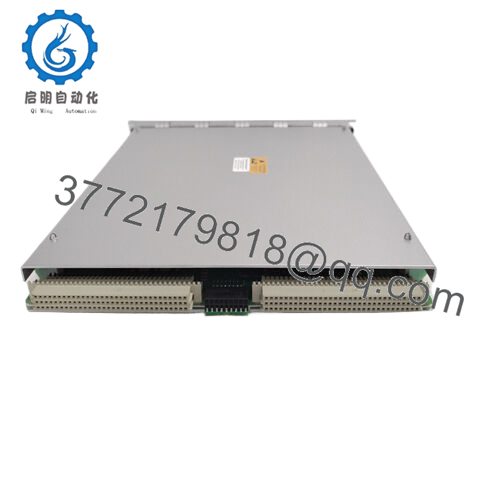
 WhatsApp: +86 16626708626
WhatsApp: +86 16626708626 Email:
Email:  Phone: +86 16626708626
Phone: +86 16626708626


